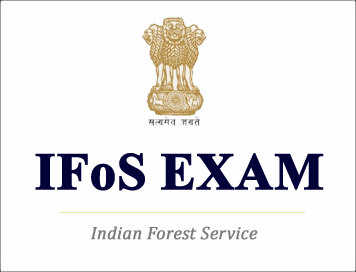(HOT) UPSC Current Affairs 2025 PDF
NEW! The Gist (NOV-2025) | E-BOOKS
(Download) UPSC IFoS (Main) Exam Paper 2020 "Botany"- I

(Download) UPSC IFoS (Main) Exam Paper 2020 "Botany"- I
Exam Name: IFoS (Main) Exam
Exam Year: 2020
Subject: "Botany"- I
'SECTION A'
Q1. Answer the following questions keeping your answers brief and to the point.
(a) How can algae be used in sewage treatment ?
(b) With a labelled sketch describe the ultrastructure of bacterial flagella. Describe its mechanism of movement.
(c) Explain in detail the process of fertilization in Angiosperms.
(d) Describe and differentiate heterocyst cell from blue-green algal cell.
(e) Deuteromycotina has been called “Waste Basket Assemblage.” Substantiate.
Q2. (a) Describe the stelar organization and evolution in Pteridophytes.
(b) Describe the life cycle of the pathogen causing damping-off of seedlings of tobacco and tomato.
(c) Describe the mechanism and benefits of parasexuality.
Q3. (a) Discuss the three kinds of mycelia encountered in Basidiomycetes. With suitable diagrams bring out the significance of clamp connection.
(b) Trace the evolution of sporophytes in Bryophytes with neat labelled sketches only.
(c) Describe the mode of action What are Antibiotics aminoglycosides.
Q4. (a) Name the organisms causing black, yellow and brown rust of wheat. Describe the symptoms of black rust of wheat and the life cycle of the pathogen causing it.
(b) What do you mean by genetic recombination ? Describe different methods of bacterial recombination.
(c) What is dissemination of disease ? Describe methods of plant virus dissemination in brief.
'SECTION B'
Q5. Answer the following questions keeping your answers brief and to the point.
(a) Comment on (i) Totipotency, (ii) Somatic hybrids vs. Cybrids.
(b) What are Petrocrops ? Name 4 (four) promising petrocrop species with family.
(c) Enumerate the applications of palynology.
(d) What is plant defence ? Explain different mechanisms of plant defence.
(e) “Petrified fossils are the marvels of paleobotanical studies." -- Substantiate.
Q6. (a) Define Fumitories and Masticatories. Describe in detail the origin, botanical characteristics and cultivation of one representative each of the above categories
(b) Illustrate the floral characters of the family Arecaceae with floral formula and floral diagram. Why is this family economically important ?
(c) What is tissue culture ? How can this technique help in reviving the endangered plant species ?
Q7. (a) Differentiate Heterospory from Homospory. How does heterospory lead to seed habit ? Discuss the biological significance of heterospory with reference to Selaginella.
(b) Enlist the botanical names of five plants yielding drugs and mention the plant parts from where the drugs are obtained.
(c) Describe successive stages of development of cellular endosperm.
Q8. (a) Describe the methods of cultivation of rubber plants. Describe how the latex is processed to get rubber. What precautions are taken while tapping rubber?
(b) What are the differences between Dicot and Monocot roots ? With suitable diagrams explain secondary growth in dicot roots.
(c) Mention the botanical name with family of plants yielding the following, with the morphology of the part used :
(i) Spices
(ii) Perfumery
(iii) Gums
(iv) Sugar
(v) Beverages
(Ebook) Download IFoS Previous Year Papers e-Book
Study Kit for Indian Forest Service (IFoS) Prelims
Printed Study Material for IAS Exam (UPSC) (Combo)
<<Go Back To Main Page
Courtesy : UPSC


